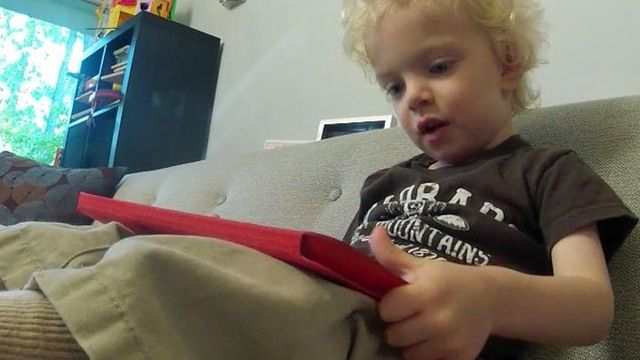New research studies link between eye movement, autism
Using new research techniques, doctors at UNC Hospitals are coming closer to answering a key question about autism spectrum disorder -- when does it begin?
Posted — UpdatedFor 3-year-old Grayson Kollins, autism symptoms didn't show up until he was about 18 months old. Most classic symptoms of autism develop between 1 and 2 years old.
"We thought everything was fine, until about 18 months," Grayson's mother, Katharine, said. "His language. He wasn't putting words together."
Six months later, Grayson had regressed and almost entirely stopped speaking, his mother said. Doctors at UNC diagnosed him with autism based on co-occurring behaviors.
"They begin to show sort of the social deficits and ritualistic, repetitive behaviors," Dr. Joseph Piven, a pediatric psychiatrist at UNC, said.
Grayson's mother said his interests narrowed.
"Sea creatures. Anything that lives in the ocean," she said.
"He's going to be a marine biologist," Scott Kollins, Grayson's father, said.
Because of their son's diagnosis, the Kollins family worried that their daughter, 10-month-old Evelyn, may also develop autism.
They decided to include her in a UNC research study that looked at eye movement research of the younger siblings of autism patients.
Doctors believe as many as 1 in 5 younger siblings of autism patients can also wind up with the disorder.
Evelyn Grayson and other children included in the study stared at faces or objects on a computer screen. As images move on the screen, a camera measures eye response.
"We found in those kids who ended up having autism, they moved their gaze more slowly," Piven said.
Researchers have also identified potential links to differences in neuro-circuits of the brain. They've found clues in babies as young as 7 months old.
In Grayson's case, specialized therapies have helped him improve his vocabulary and some behaviors. He still likes a structured environment.
Thanks to the research study, the Kollins' say they feel less anxious about their daughter Evelyn's future.
"If she does need services, we'll know far earlier than we knew with him," Katharine Kollins said.
• Credits
Copyright 2024 by Capitol Broadcasting Company. All rights reserved. This material may not be published, broadcast, rewritten or redistributed.





